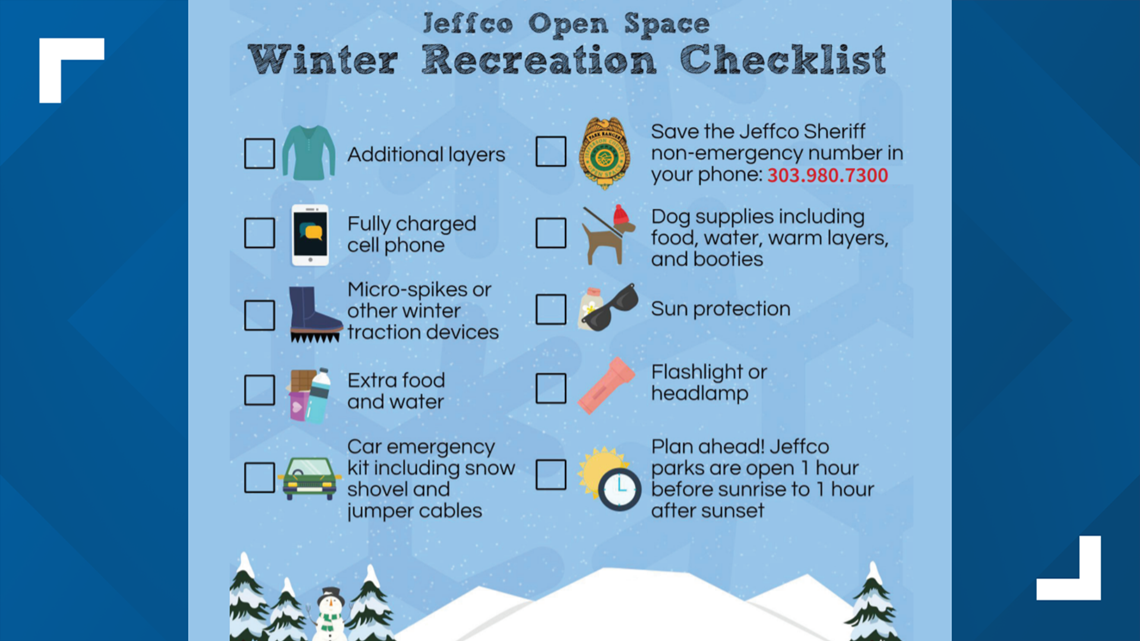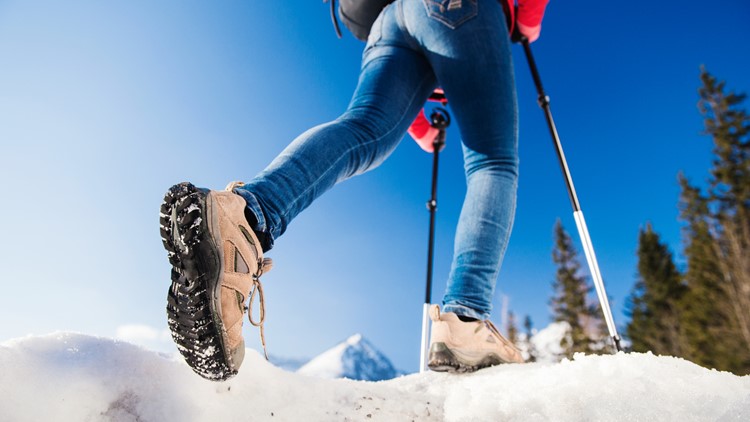DENVER —
For Coloradans looking to hike during the winter, it’s important to be safe and conduct research before venturing towards the great outdoors.
For starters, check to see if the desired trail or park you want to venture to has any closures.
It’s also important to check what the weather looks like for the day, if any storms are in the forecast and to know the right gear to wear or accompany you on your journey.
What to expect
Snow compact on trails
Once snow has been compacted on trails, it may stick around for several months, until June or July, according to Chris Barker, communications supervisor for Jefferson County Open Space. He said in an email this is especially the case in shaded areas, north facing aspects and between freeze and thaw cycles. This may create treacherous sections of trails. Expect the possibility of mud, ice and snow.
Weather and temperature
Winter months in Colorado take place from December - March. The Rocky Mountain National Park’s (RMNP) website states that winter weather is possible at any time and may quickly change road and trail conditions.
You can always refer to 9NEWS weather page to learn about upcoming snow storms or warnings issued that may impact mountain travel.
Visitors can also check weather forecasts for the area at the RMNP website.
Avalanche hazard
Avalanches can be triggered by backcountry travelers, according to RMNP. Travelers should never assume a trail is free of an avalanche hazard.
Visitors can check current avalanche conditions at the RMNP website.
How to prepare
Refer to a Winter Recreation checklist
For anyone looking to hike within Jefferson County, Barker encouraged visitors to add the Jeffco Sheriff’s non-emergency phone number (303-980-7300) in case they find themselves in a pinch. And anyone can refer to Jeffco's winter recreation checklist before heading out the door.
Barker also recommended bringing a fully charged phone and extra food and water.
Below is the Winter Recreation checklist from Jeffco Open Space, a good list to utilize before planning a hiking trip in the winter.


Layers, Layers, Layers
Dressing in layers from head to toe is essential.
Linda Lawson has volunteered with the Colorado Mountain Club and has 15-20 years of experience with outdoor recreation. She passed along some winter hiking layering tips and other safety tips as well.
“I think no matter where you’re hiking, boots are one of the most important items," Lawson said. "And you need to have winter boots, which generally are rubber on the outside and they have a heavier insulation on the inside.”
Lawson said if you do not have winter boots, waterproofing summer hiking leather boots will also suffice.
“The next layer would be your socks. Some people prefer to have a thin sock first… then a heavier sock over that,” she said.
Lawson learned about a unique recommendation from the winter camping school director of Colorado Mountain Club, who said that aluminum foil can be used to keep toes warm by molding the foil around toes on top of a thin pair of socks, and to then put on a heavy pair of socks on top so the foil is in the middle.
“The idea is that the aluminum foil will reflect back heat from your toes to your toes,” Lawson said.
And if you plan on hiking with your dog, you can protect them by dressing your dog in booties and a coat.
Good winter hiking gear
Lawson recommended using microspikes that can slip over boots. Microspikes help with traction on icy winter trails.
She also recommended bringing a trekking pole along and changing out the baskets depending on the environment.
“You want a snow basket which is a round plastic device so that you don’t sink in so far into the snow when you’re travelling,” she said.
On mud and dirt, Lawson said to then switch to a regular summer trekking pole. She said Walmart is a good place to find inexpensive packages meant for snowshoeing — a package may include snow shoes and a trekking pole.
Leave no trace
Lawson emphasized how important it is to pick up after yourself when hiking, especially during the winter.
“I really think it’s important to follow ‘leave no trace,’ definitely in the winter time,” she said. “If you need to go to the bathroom to defecate, you pack it out, because you cannot bury it in the snow.”
She also recommended to cover up yellow snow and to pick up after your dog. Any solid waste should not be left behind.
SUGGESTED VIDEOS | Colorado Guide



